When you invest in a new car, truck, or SUV, you want to keep it looking sweet – right? Truthfully, we do – in fact, according to the IBISWorld Industry Report, the automotive paint protection, and car wash market, just in the USA, involved the spending of $10.2 BILLION by vehicle owners in 2016 alone.
That’s a lot of hard-earned money spent on making our daily drivers and weekend-warriors look shiny. Besides washing the vehicle, applying protective car wax or ceramic coatings is the natural progression of automotive care.
The question most consumers ask is – “when it comes to car wax vs ceramic coating, which is best.”

In all honesty, that’s a hard question to answer.
Some people prefer the old-school physical labor associated with applying and reapplying car wax. Others love the durability and brilliant shine produced by Ceramic Coating. Regardless of what side of the fence you lean on, you deserve factual information – so you can make an informed decision.
That’s what we do here at AvalonKing.
Our mission is to empower consumers, by creating products that are high-quality solutions to daily problems, are easy to use, and offer value – like our Armor Shield IX DIY nano-ceramic coating. We also understand that some people just prefer other products – and that’s completely cool.
So, let’s take some time to remove the BS from the old car wax vs ceramic coating debate. In the information below, we’ll dive deep into explaining the great and not-so-great features of car wax and Nano-technology infused ceramic coatings.
1. What is Car Wax?
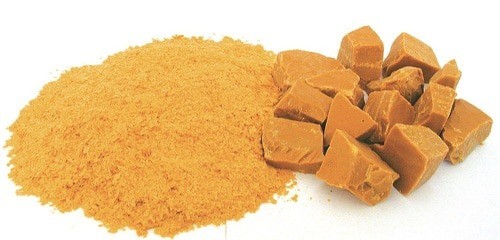
The most popular type of autobody protectant sold across the globe is car wax. The most common substance used for the protection of cars, trucks, and SUV’s is referred to as carnauba wax.
This is a natural substance that is derived from Copernicia Prunifera Palm tree leaves; specifically found in Northern Brazil.
In its natural form, carnauba wax is secreted from these palm tree leaves and creates a hard-outer shell (kind of like an M&M), which protects the leaves from harsh exposure to the sun.
Automotive wax manufacturers combine carnauba wax with solvents and beeswax to create a similar protective layer on top of the paint applied to your vehicle. It is applied by rubbing the wax onto the vehicle’s exterior (usually in a circular pattern), letting it dry, then buffing out the residue until the finish is clean and shiny.
2. How Long Does Car Wax Last?
Automotive wax manufacturers tend to debate with each other on how to answer this question. Some suggest waxing a vehicle’s exterior every four to six weeks, while others market their product as ‘longer-lasting’ formulas that can hold up for up to six months.
However, what really confuses several consumers is understanding the difference between car polish and car wax. An honest car polish is infused with oils, that creates a gloss effect on paint as it’s applied, buffed out, and removed.
Wax, on the other hand, is designed to protect areas that have been polished. They provide a hard layer of protection on the paint to protect it from exposure to daily elements.
3. What Makes a Quality Car Wax?
Technology has improved the quality of a lot of items we use daily – including car wax.
Arguably the best car waxes used today, and rated by industry experts are synthetic car waxes. They replicate the natural sealing effects of Carnauba wax with a synthetic substance, that also includes a polishing agent.
4. How is Car Wax Applied?
Applying car wax is a multiple-stage process that takes time, temperature control, and patience. Following steps must be taken to ensure proper application of car wax:
Keep Vehicle In Temperature-Controlled Environment
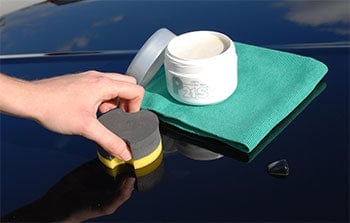
It begins by keeping your car in a temperature-controlled environment. It’s recommended to keep your car out of direct sunlight.
Apply Wax Using A Sponge

The next step is to apply the ‘wet’ wax with an application ‘sponge’, in a circular motion (remember Wax-On from Karate Kid?).
Finish By Waxing Off

The final step is the Wax-Off portion. Most car owners who prefer car wax using a high-speed electrical buffer, like the one displayed in the image. This saves a lot of time and totally helps build Popeye-like forearms.
5. What Are the Pros of Using Car Wax?
Here are some of the advantages of using car wax:
Environmental Friendly
Carnauba wax is an environmentally-friendly and natural substance.
Simple to Use
It’s fairly simple to apply – you just need to learn how the process is completed and invest the time and manual labor to complete it.
Doesn’t Require Professional Help
It does not require professional help – although, for better results, using advanced car wax application and polishing equipment does produce improved shine and protection.
Heat Resistant
Car wax is heat resistant, meaning once it’s applied correctly, it will not wear thin simply due to excessive heat.
Hydrophobic Properties
Car wax holds excellent hydrophobic properties (meaning it resists water really well).
It was also the substance of choice of Mr. Miyagi to teach Daniel-San to begin his Karate training in The Karate Kid so I guess that counts as well.
6. What Are the Cons of Using Car Wax?
While there are several advantages of using car wax, there are some things you should consider.
Requires Frequent Reapplication
As noted above, some car waxes should be reapplied every 4 to 6 weeks for maximum benefit. You have to apply car wax regularly after certain intervals in order to protect your car’s paint.
A Lot of Work
Correct waxing is a process – requiring you to wash the car first, completely dry it, prep it (sometimes by removing older wax build-up), applying, and then buffing. It is labor-intensive, taking a lot of time, energy, and effort to complete correctly.
Can Be Confusing
There are some products that are marketed as car wax – but they really aren’t. A great example of this is the spray wax used at an automatic car wash. This is more of an autobody conditioner, but it’s washed off quickly and really doesn’t do much to protect the body.
7. What is Nano Ceramic Coating?

A Nano ceramic coating is essentially a liquid-polymer that is derived from silica and is commonly used in the manufacturing of ceramic or glass products. Like carnauba wax, there are several unique combinations, molecular structures, and quality that yield different results.
The word “Nano” refers to the size of the molecules or particles in the coating itself. These particles range from 80-100 Nano-meters. FYI – there are 25 million nano-meters in an inch.

Because the particles are so small, when applied to a surface, they seal all the pores making the surface hydrophobic (water-repellent), but also resistant to UV, scratches, chemicals, extreme heat and even anti-graffiti.
8. How Long Will a Nano Ceramic Coating Last?
A ceramic car coating is inorganic, which allows them to be manufactured at higher temperatures. This permits the ceramic coating to create an atomic bond with painted substances when it’s applied correctly – which offers a stronger and more durable layer of protection.

They are generally more resistant to UV light, harsh weather conditions, grit and road grime, bird droppings, scratches, and sand. They can last for years and can’t be removed by high-pressure washes or automatic car washing stations.
9. What Makes a High Quality Ceramic Coating?
First and foremost, it’s important to clarify the difference between professionally installed ceramic coatings and DIY nano-ceramic coating products.
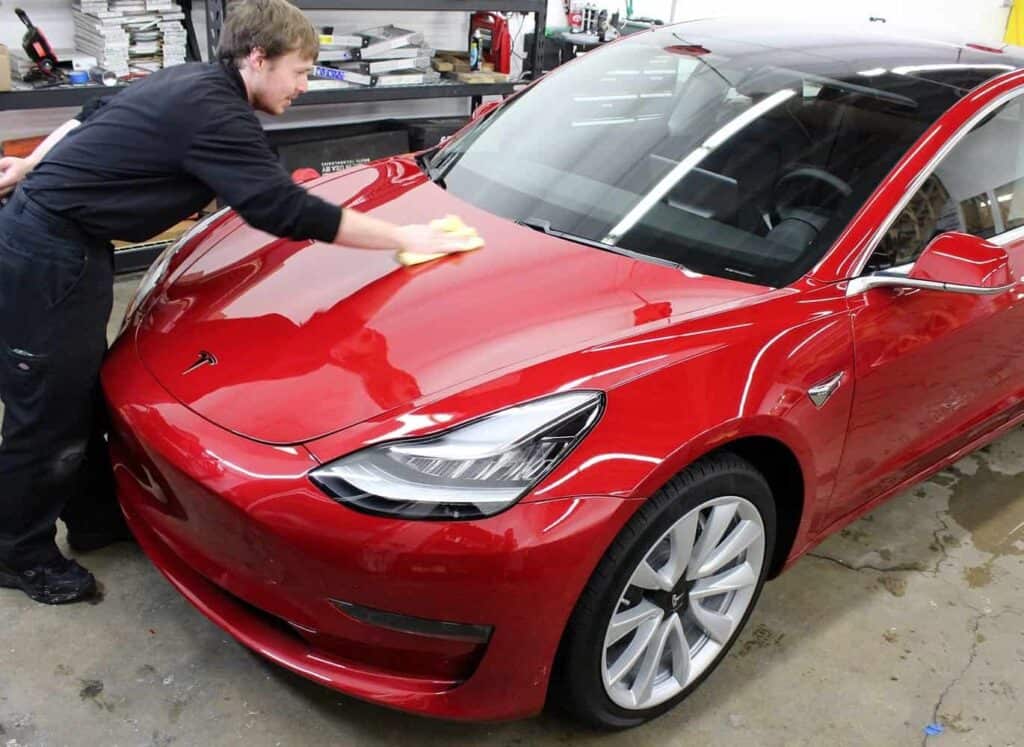
The professional ceramic coating is a commercial-grade product. They are designed to be applied in a clean-sphere environment and require a tremendous amount of prep work prior to installation. Once it has been applied, it needs to sit in a temperature-controlled facility for one to five days – depending mainly on the condition of the existing paint.
Pricing for this type of product and the required installation can range from $750 to $2,000.
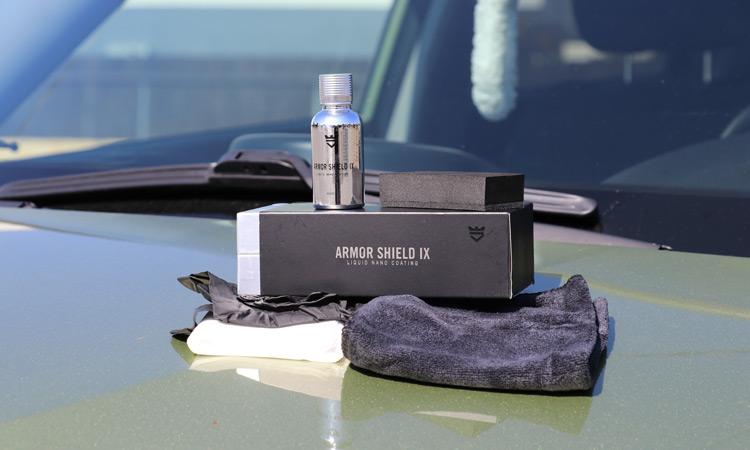
DIY nano-ceramic coatings have been carefully engineered to accomplish the same benefits of commercial-grade coatings but without the robust installation process. While they do require some prep work and should be permitted to cure without exposure to the elements, they are easier to install, have a wider-usage span, and are much more affordable.
Pricing for a DIY nano-ceramic coating can range from $10 to $300, with an obvious huge variation in quality.
10. What are the Pros of Using Nano Ceramic Coating?
Like car wax, there are several advantages and disadvantages of using Nano ceramic coating products. Here are some of the pros:
Protection Against UV Rays
Nano Ceramic Coating provides an exceptional layer of protection against UV rays, which protects the paint from oxidation, developing sun-damage, and can increase the resale or trade-in value of a vehicle.
Long-Lasting
It lasts much longer than car wax. While car wax manufacturers suggest reapplying every month, the ceramic coating can be applied once and can last anywhere from 2 to 5 years.
Highly Resistant to Contaminants
It is highly resistant to natural-occurring debris such as mud, water, acid rain, bug splatters, and bird droppings.
Hydrophobic Properties
It is much easier to clean your vehicle. The hydrophobic effects of automotive Nano-ceramic coatings make washing and drying a car much quicker. It also naturally resists water spots when drying naturally.
It provides a highly intense gloss and shines for several years.
11. What Are the Cons of Using Nano Ceramic Coating?
So – what are the cons?
Detailed Process
Generally, applying Nano ceramic coating is a detailed process, that requires the help of professionally trained automotive technicians.
Expensive to Purchase
It can be rather expensive to purchase (and even more to have installed and applied by a professional).
Time-Consuming
The initial application can be time-consuming. It’s recommended to keep the vehicle out of the elements for 24 to 48 hours in most cases.
12. What is Paint Sealant?

So – we’ve explained what car wax is – what nano-ceramic coating is – now, let’s address the middle child – automotive paint sealants. Car paint sealant is a fully synthetic product that use proprietary polymers to adhere to paint and produce a shiny appearance. While wax secures to paint, it will wear thin sooner than paint sealants.
Paint sealant does a much better job of protecting the paint against UV rays, sap, rain, and other debris than normal wax, but – not as good as nano-ceramic coatings. They also tend to produce a shiny, yet dull or ‘cold’ appearance, which is why most automotive detailing experts apply a traditional carnauba wax on top of paint sealants – to offer the best of both worlds.
13. So – What’s Best Car Wax vs Ceramic Coating?
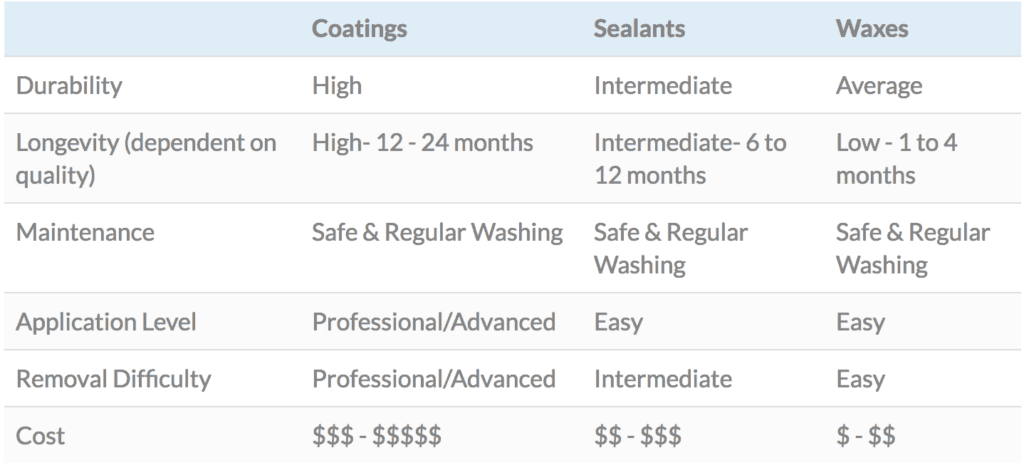
As you can see – there are pros and cons of all products. Like any consumer product, quality, ingenuity and the design of the product, the ingredients used, and even the packaging can improve or reduce the value of each product.
Choosing between the two depends on your budget, level of personal involvement in the care and upkeep of your vehicle, and whether you’re willing to invest the time to do it yourself – or pay to have a professional do the job.
Personally, I think using car wax is more of a pain in the ass than helpful. Sure, there was a time when I was younger when I used to enjoy spending my Sunday mornings washing and waxing the sled – but that shit got old real quick; and so did I.
Those were the dark times – before Nano-ceramic coatings. So, if I have a choice, I’m willing to spend a few bucks to do it right the first time – and produce better results.
The important thing to remember is that using some sort of protective coating (either car wax or Nano ceramic coating) is critical to keeping your vehicle protected from exposure.






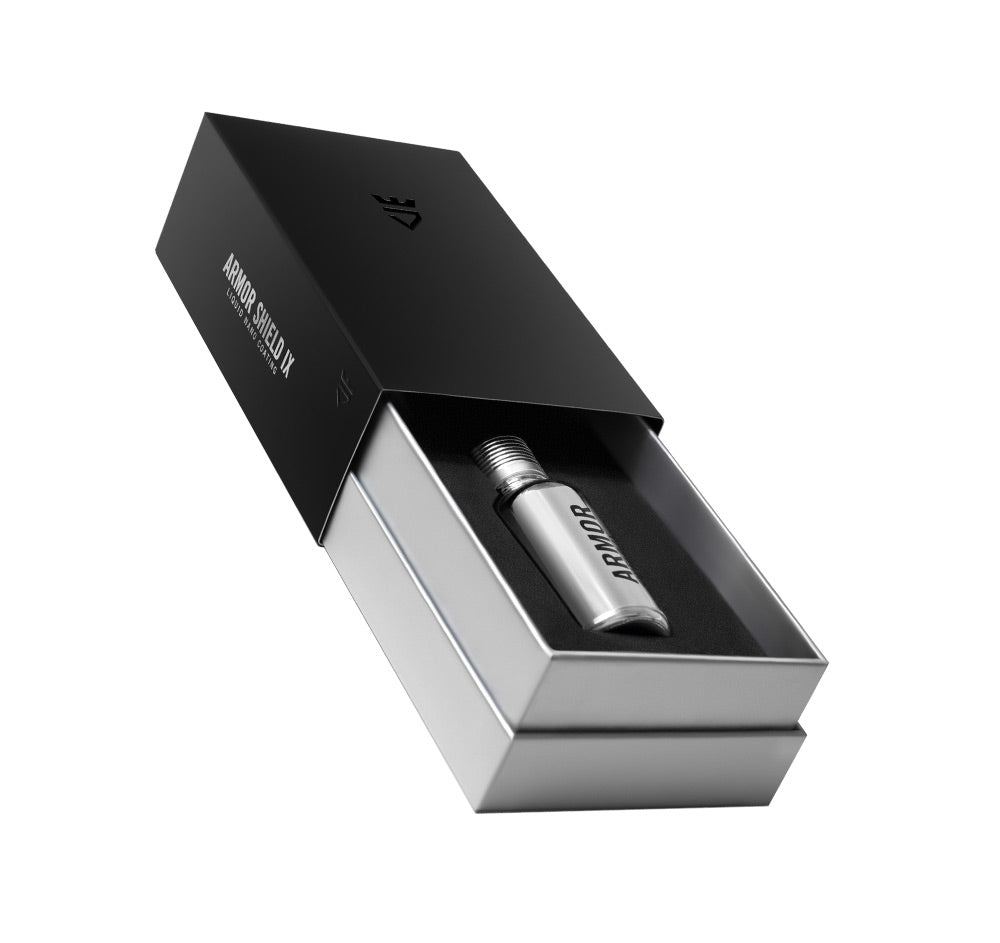



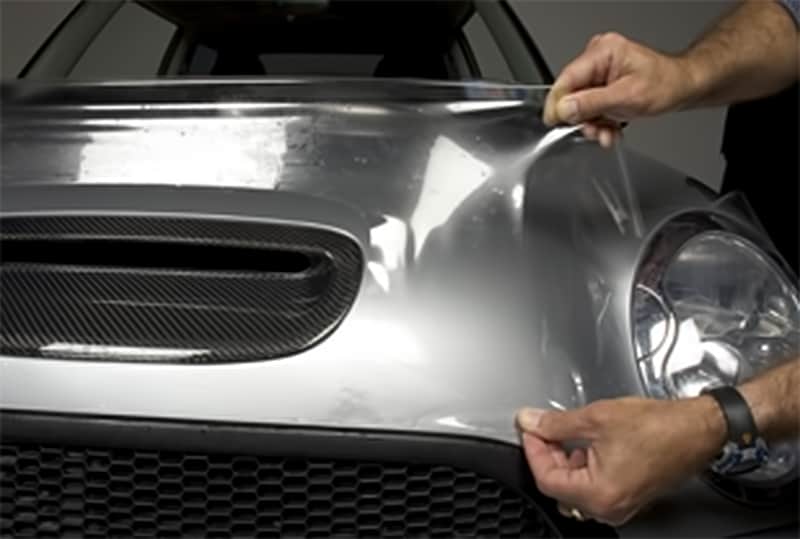

28 comments
John DeMarco
I have a 35 ft fiberglass boat. I want to protect the gel coat How would ceramics help me- boat is in salt water 6 months of the year. I have tried a dyi spay from Mothers but I found dirt running of after a rain storm caused black makes not easily removed.
What is the best way to protect my vessel
I have a 35 ft fiberglass boat. I want to protect the gel coat How would ceramics help me- boat is in salt water 6 months of the year. I have tried a dyi spay from Mothers but I found dirt running of after a rain storm caused black makes not easily removed.
What is the best way to protect my vessel
Dale Pearl
Hi Serge!
You will need to use a prep or stripping wash to remove any existing sealants prior to applying Armor Shield.
Hi Serge!
You will need to use a prep or stripping wash to remove any existing sealants prior to applying Armor Shield.
Serge
Hi. I have car with installed satin vinyl. I used hydrofobic and sealent protection for vinyl. I want install ceramic coating. How I have to clean vinyl?
Hi. I have car with installed satin vinyl. I used hydrofobic and sealent protection for vinyl. I want install ceramic coating. How I have to clean vinyl?
Dale Pearl
Hi Shawn!
If you prep the surface area you’ll get a better shine with ceramic coatings. If you don’t want to put in the effort with the prep work then a wax will give you a better shine. Ceramic coatings mirror and reflect enhancing the shine and appearance.
Hi Shawn!
If you prep the surface area you’ll get a better shine with ceramic coatings. If you don’t want to put in the effort with the prep work then a wax will give you a better shine. Ceramic coatings mirror and reflect enhancing the shine and appearance.
Shawn alexander
Without taking anything else into consideration, do u get a better shine with waxes or coatings? Just curious to what u think gives u a better shine?
Without taking anything else into consideration, do u get a better shine with waxes or coatings? Just curious to what u think gives u a better shine?
Jose
Ceramic coating is definitely better, it protects your vehicle against any outside contaminants, and much the wash last much longer compared to a car wax. But give both of them a try, and you will see. Great article by the way, keep up the great content.
Jose
Ceramic coating is definitely better, it protects your vehicle against any outside contaminants, and much the wash last much longer compared to a car wax. But give both of them a try, and you will see. Great article by the way, keep up the great content.
Jose
Tim C
Hi there. You might want to reach out to that company for advice on that one. But usually, you don’t apply wax on top of another layer of wax. You need to remove car wax with each application.
Hi there. You might want to reach out to that company for advice on that one. But usually, you don’t apply wax on top of another layer of wax. You need to remove car wax with each application.
Joe Fletcher
Can you Apply Adams ceramic paste wax on top of a regular carnival wax? Would that hurt it?
Can you Apply Adams ceramic paste wax on top of a regular carnival wax? Would that hurt it?
Tim C
Hi Robert:
A ceramic coating requires a completely clean surface in order to bond correctly. This means you’ll need to remove all wax during the prep process. The prep process involves using a wax stripping shampoo first, then clay bar treatment, polishing compound to remove any remaining wax or scratches, finally an IPA panel wipe down right before application.
Hi Robert:
A ceramic coating requires a completely clean surface in order to bond correctly. This means you’ll need to remove all wax during the prep process. The prep process involves using a wax stripping shampoo first, then clay bar treatment, polishing compound to remove any remaining wax or scratches, finally an IPA panel wipe down right before application.
Robert
can ceramic be applied over a fresh coat of wax? I’ve been using mothers carnauba cleaner wax for years up hear in Maine it really brings the shine back after a rough winter or should I use a polishing compound and then ceramic
can ceramic be applied over a fresh coat of wax? I’ve been using mothers carnauba cleaner wax for years up hear in Maine it really brings the shine back after a rough winter or should I use a polishing compound and then ceramic